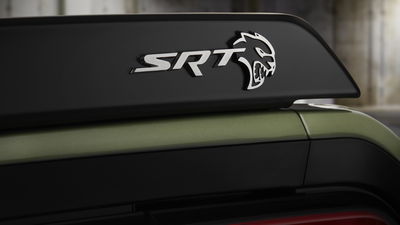Engineering Explained: 3 Reasons Why The Bugatti Veyron Is Inferior To The Toyota Prius

Let’s make it a fair fight, and allow for three rounds between the competitors: vehicle specifications, engine technology, and the ability to attract the opposite sex.
Round 1: Vehicle Specifications
| Bugatti Veyron | Toyota Prius | |
| Base MSRP | $1,657,700 | $24,200 |
| Curb Weight (lb) | 4486 | 3072 |
| Drag Coefficient | 0.39 | 0.25 |
| EPA Estimated City Fuel Economy | 8 | 51 |
| Fuel Capacity (gal) | 26.4 | 11.9 |
| Seating Capacity | 2 | 5 |
| Headroom (Front) | 36 | 38.6 |
| Legroom (Front) | 44 | 42.5 |
| Cargo Volume (cu ft) | 1 | 21.6 |
| Turning Circle Diameter | 39.3 | 34.2 |
| Number of gears | 7 | Infinite |
| Number of speakers | 8 | 6 |
For the same price of one Veyron, 67 of my closest friends and I can all be driving a vehicle that saves six times the amount of fuel in a car with incredible aerodynamics, infinite gears, and space for a couple of sets of golf clubs (rather than a gallon of milk). The Veyron does have two extra speakers though, so it’s got that going for it.
I’m with you though. Golf is boring, and who needs more than one gallon of milk? That said, the Veyron is as aerodynamic as a Chevy Tahoe (lots of radiators to feed) and weighs 1400 lbs (635kg) more than a Prius, so round one goes to the hybrid.
Round 1 Winner: Toyota Prius
Surely the Veyron’s sophisticated W16 engine will put the Prius to shame. Let’s take a look at how it works first:
Round 2: Engine Technology
| Bugatti Veyron | Toyota Prius | |
| Layout | W16 | I4 |
| Engine Size (L) | 8 | 1.8 |
| Horsepower | 1001 | 134 |
| Torque (lb-ft) | 922 | 153 |
| Number of Turbochargers | 4 | 0 |
| Engine Weight (lb) | 882 | Not 6 of me |
| Recommended Fuel | Premium | Regular |
| Expansion Ratio | 9.0:1 | 13.0:1 |
| Regen Braking | No | Yes |
| Throttle Response | Turbo Lag | Instant Electric Torque |
| Engine Cycle | Otto | Atkinson |
So the Prius has a sky-high expansion ratio (allowing for efficient power production), matched with an electric motor providing instant torque from a standstill. It can also regenerate energy while braking, all while using cheaper regular octane fuel. That all sounds very technical, so round two goes to the Prius and its ever-efficient Atkinson cycle.
Round 2 Winner: Toyota Prius
What is the Atkinson cycle? Check out this video to learn more about hybrid engines:
Round 3: Attracting The Opposite Sex
For this section, I interviewed a couple of my female friends to determine whether or not they would prefer to ride in a Veyron or a Prius. Surely the Veyron will win in sex appeal? (G1 = Girl 1)
EE: “Would you prefer a car that has 1000 horsepower, or one that has 134?”
G1: ‘Whichever drowns fewer polar bears’.
Ah, polar bear lover, I should have known this one would have gone to the Prius. Every time a Veyron is flatfooted, an alpine buddy slips off his ever-shrinking ice. Okay, going to have to alter the format.
EE: “Okay, picture this. You and I head out on a date, we’ve got plenty of great food and are on our way to a nearby park. Wouldn’t it be awesome to roll up in a Bugatti?”
G2: “Can I bring my dog?”
EE: “Well… no, I mean, it can’t fit.”
G2: “Do you have another car?”
EE: “Yes, I mean, we could take the Prius, but-“
G2: “Oooh, yes let’s take that!”
EE: “But it-“
G2: ‘Fits my dog, exactly!’
Okay, two women are clearly unimpressed by an environmentally unfriendly, dog-free ride. Clearly my understanding of women is limited, and this is a losing battle. Ashamedly, round three goes to the Prius.
Round 3 Winner: Toyota Prius

Personal opinion: which would I prefer?
Let’s take a quick moment to glance through some maintenance maths, and pretend we drive a Veyron 10,000 (incredibly fast) miles per year. Bugatti recommends changing the tyres every 2500 miles, costing $40,000 (£25,600) for the set. Let’s say we have it serviced (oil change & inspection) twice a year, each costing a trivial $20,000 (£12,800). The wheels must also be inspected regularly for cracks/imbalances, with a recommended replacement interval of 10,000 miles. So now we’re well over $200,000 (£128,000) and we’re not including fuel (which seems cheap, all of a sudden) or insurance (good luck with that one).
For the same price of simply maintaining a Veyron annually, you could either buy a pair of Vipers, a pair of GT-Rs, a couple of R8s, or a Ferrari 458 (not to mention a dozen Prii), all of which don’t have maintenance costs nearly as outrageous.
Alright, I’m convinced. Hand over the Toyota keys - though the Bugatti Chiron is just over the horizon; no doubt with an overwhelming desire to finally one-up the Prius.














Comments
No comments found.